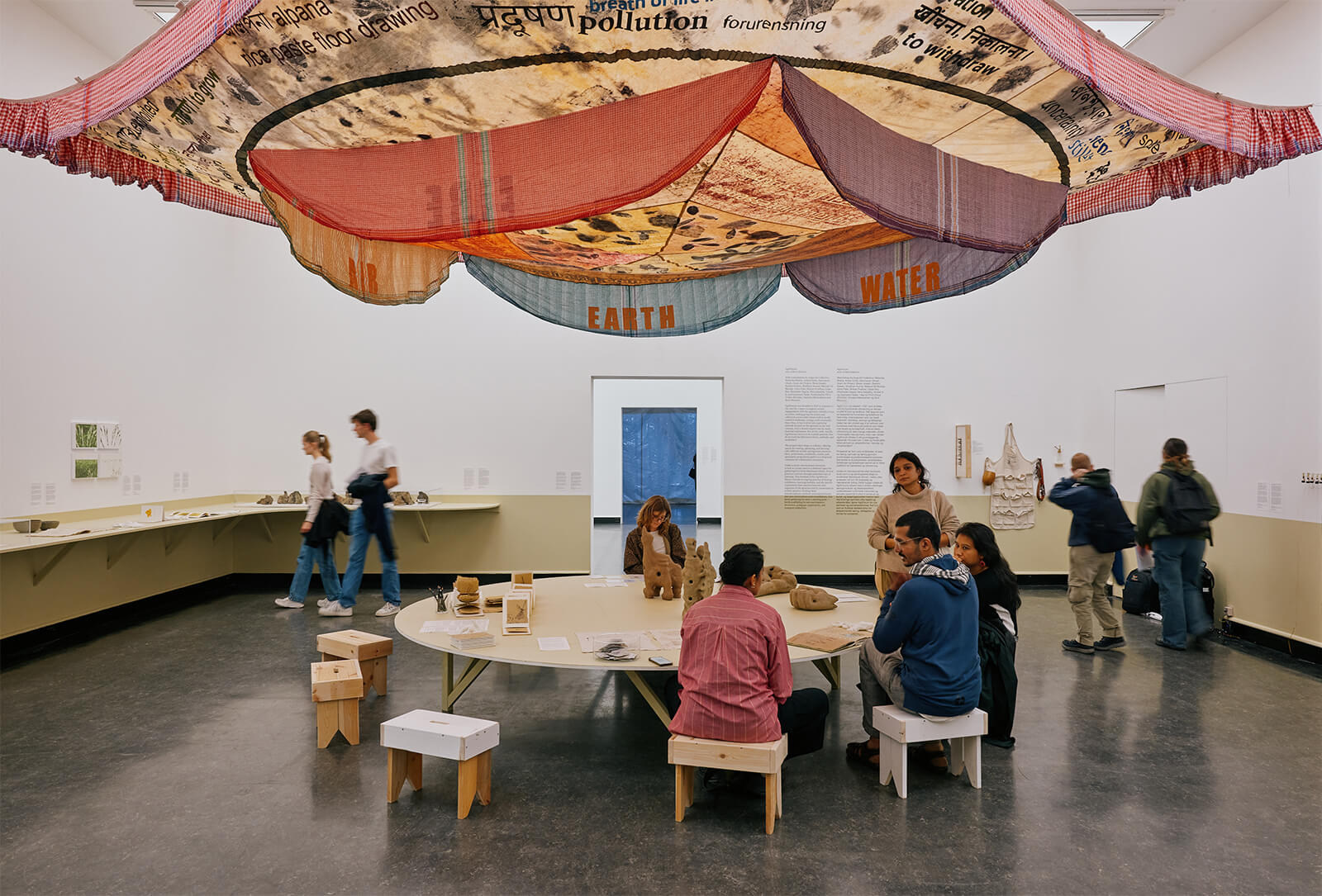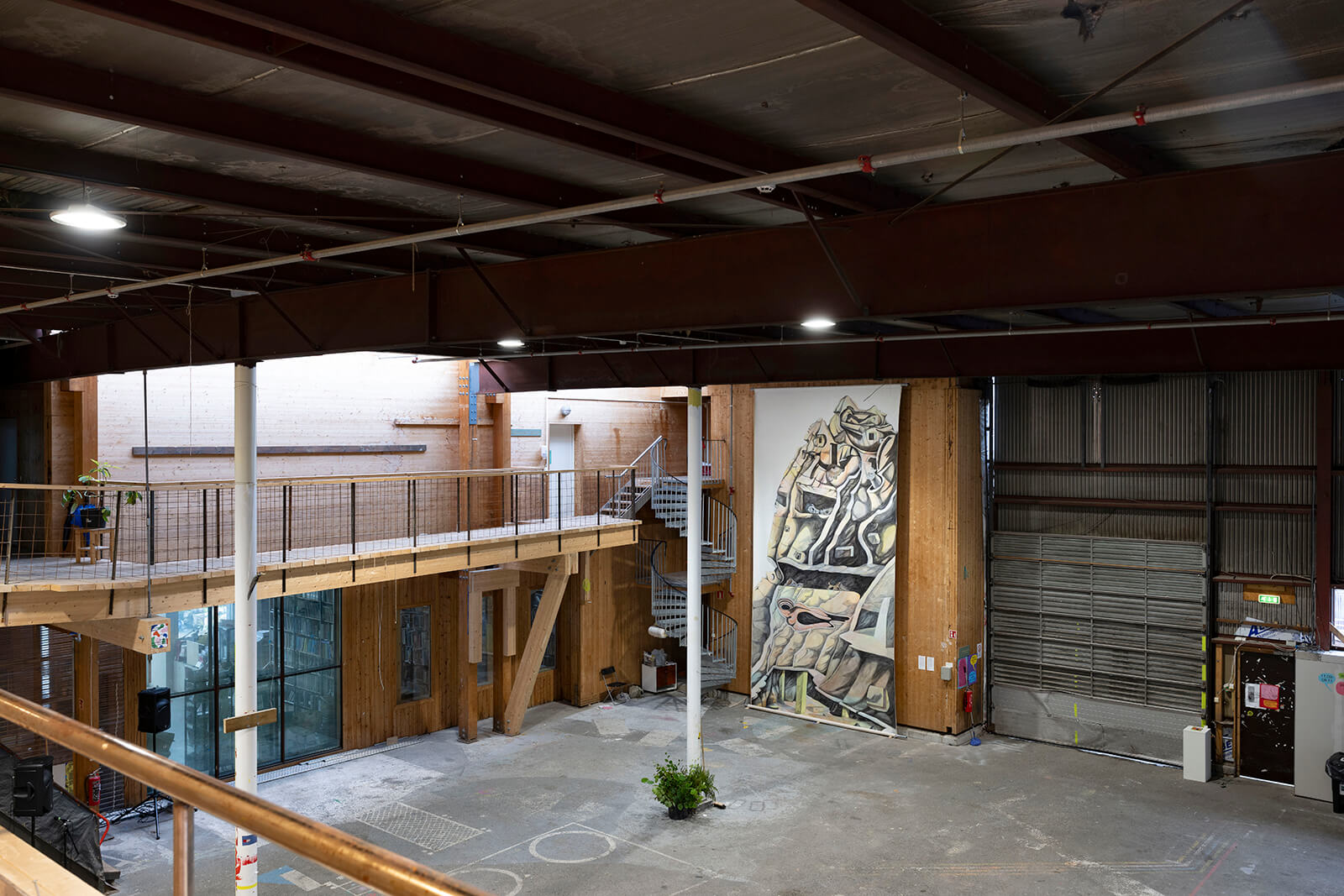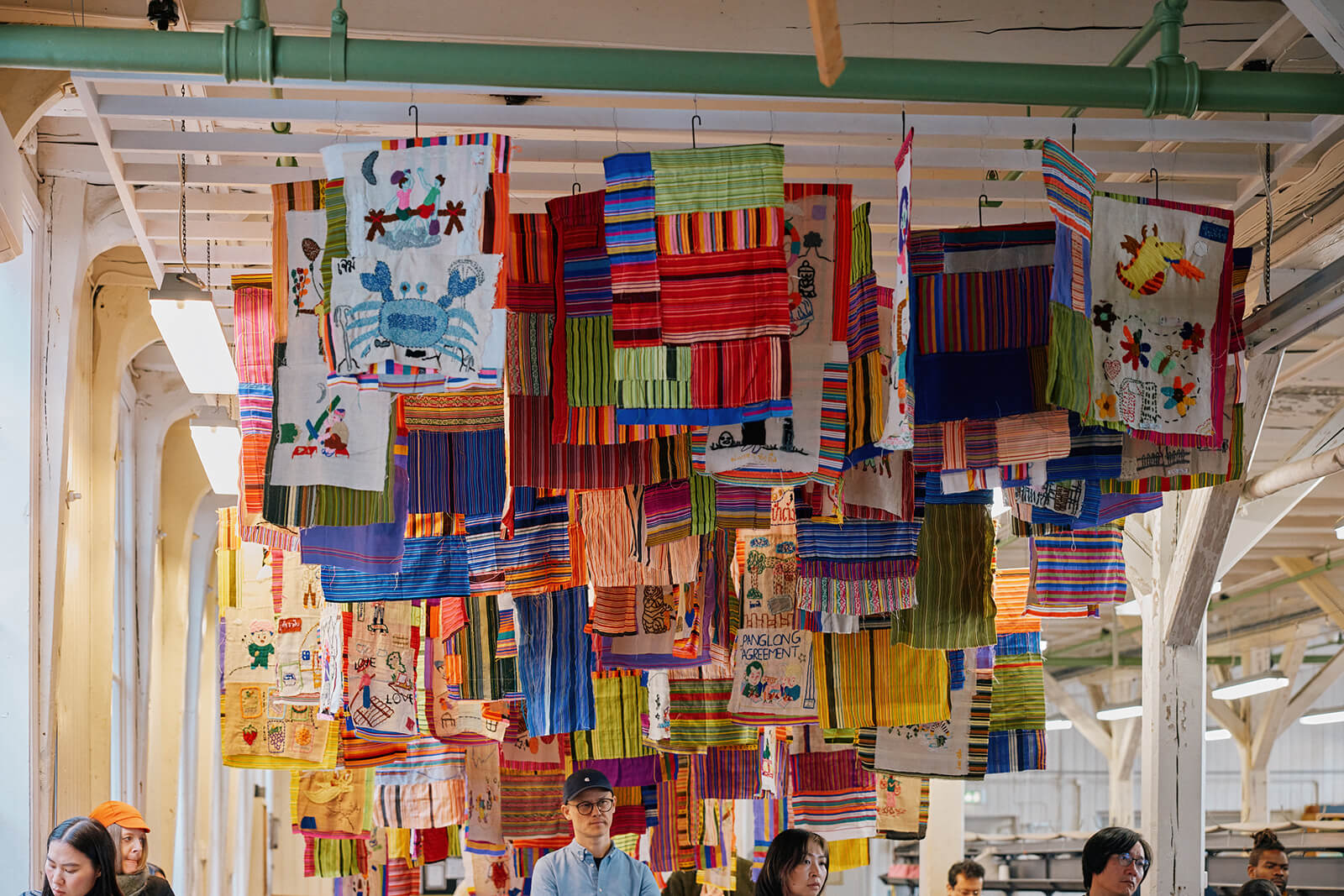India Art Fair returns for its 15th edition in 2024 with a new Design section
by Mrinmayee BhootJan 25, 2024
•make your fridays matter with a well-read weekend
by Shaunak MahbubaniPublished on : Oct 13, 2025
A childlike sense of excitement surged in us as we left the Bergen harbour to embark on a 45-minute journey to the Salhaus Textile Industry Museum, one of the outposts of the fifth edition of the Bergen Assembly. The Literature Boat Epos, on which we travelled, has run as a floating library and cultural platform since the 1960s; it was redesigned by students of the Bergen School of Architecture for this assembly. The light rain did not dampen spirits as we got a small glimpse of Norway's famed fjords—narrow inlets of the sea carved by glacial movements. As the vessel docked, we could see Norwegian artist-composer Elin Már Øyen Vister and their ensemble put together a motley set-up, with no indication of the treat in store for us. The ensuing sonic offering to the sea was profoundly magical, starting with guttural evocations gradually layered with a live synthesised sonicscape, only enhanced by the rain that joyfully answered this serenade to the water. Such intercultural and inter-species call-and-response, of learning from and with each other, was mirrored across the assembly convened by Indian artist-activist Ravi Agarwal, Palestinian writer and cultural researcher Adania Shibli and the Bergen School of Architecture (BAS). Works are primarily installed around the Bergen city centre, with a handful at outposts such as BAS. A few heritage sites housed a single work each, creating space for sensitive immersion.
Meghalaya-based performance artist Lapdiang Syiem's moving image work Laïtiam was enriched by such a placement at the Nonnester Tower Base. Its position next to the Second World War memorial Mother and Child reflects the essence of the Khasi cosmogenic tale U Sier Lapalan, centred on the lament of a deer who has lost her young doe to the arrow of the local tribesmen. The narrative was brought to life in an emphatic performance by Syiem in which she embodied all three perspectives, a highlight of the opening weekend. A confrontational enactment of the tribal warriors' desire to protect their land from invaders, echoing many of the calls against migration today, was deftly sliced between the innocent exploratory spirit of the young one and the grief of a mother who faces the worst kind of loss, all without easy emotional resolve, foregrounding the complexity that such entanglements deserve.
Talks and performances evoking direct experience enriched a largely stellar opening weekend; the assembly's live acts seemed privileged in spirit over installed works. Interdisciplinary artist Sajan Mani, based between Berlin and Kerala, opened his large installation—യമണ്ടൻ (Yamandan): Eruptions from Where You Buried Us—on the upper floor of the Bergen Kunsthall with a laborious 3-hour performance. Frenzied acts of marking abstracted script on the walls of the institution, significant for his community that has been historically denied the right to education and knowledge-production, left a strong impact. Continuing his work that draws from a familial history in the production of rubber in Kerala, Mani made transcultural connections to the shipping and oil industry in Norway, a leading cause of environmental degradation. Other works that loosely responded to the location without activating their own positions felt shallow in effect. Swiss-artist Monica Ursina Jäger's painted cyanotypes produced through research trips in the fjords captured some of the fantasy of this ecosystem but felt decorative in the luxurious Amundsen Bar at the Terminus Hotel, while Oslo-based Sarah Kazmi's performance Cooking at Sea: on the Dastarkhan, which attempted to combine a floor seated meal common in Pakistan with participatory linguistic games and research on Norwegian immigration to the United States, missed the warmth and care that could bond together a public engagement with disparate strands of early research.
A conversation between Munir Fasheh, Ayreen Anastas, Rene Gabri and Tenthaus Collective brought up the Palestinian concept of a Mujawarah, a fluid gathering centred on the mutual enrichment of its participants, originating in neighbourhood committees in the West Bank after the 1967 war. According to Fasheh, the ethos of such a gathering stands against the top-down model of education, rather seeking to cultivate the inherent human capacity for peer learning. The spirit of the Mujawarah, of collective learning and experimentation, threaded many works in the assembly together. The Communist Museum of Palestinian, activated by Fasheh, Anastas, Gabri and others, proposed a compelling coda to set up a museum both created and disseminated by the commons, inviting artists to contribute works while also asking people to host vulnerable works in their living or other spaces. Massai Mbili Artist Collective from Nairobi took over the Entreé gallery with works by over a dozen artists from the collective, including Kevo Stero and Anita Kavochi, whose works stood out. The collective successfully subverted Nordic minimalism, collapsing the white cube into a studio-esque display with works on paper and board strewn across the edges of the room as if the salon-style wall had overflown onto the floor. AgriForum, organised by FICA, New Delhi, foregrounded a sustained peer-learning process with artists and collectives across India who have a focus on agriculture and the field of related inquiries. Their sharply designed display, primarily composed of book-objects by Gram Art Project, Anga Art Collective, Blaise Joseph and others, was warmly housed under a shamiana, or cloth canopy, by Sanchayan Ghosh.

The presence of collectively driven outputs rooted in the display technologies of the artists’ own locations was a heartfelt reminder of Ruangrupa's documenta and the importance of the Indonesian group’s vision. To notice such curatorial tributaries is to witness how exchange occurs at a range of wavelengths, a connection that compounded my faith in the rhizomatic impact of exhibition making.

The absence of exhibition makers amongst the three convenors meant that the exhibition did not play to the codes of aesthetic synthesis. I was somewhat let down by this scattered approach on first viewing. In hindsight, seen in tandem with its thematic convergences, it does form a generative site to practice holding a certain level of incoherence, or as BAS mention in their curatorial note, a desire for what John Law has termed “non-coherence”. From art critic Aruna D'Souza's book Imperfect Solidarities, I am reminded of her call for "leaving differences intact", so that we may be forced to see "affinity in surprising and politically efficacious ways". Concurrently, taking a step back, I question why we see many biennials tasking a heterogeneous selection of curators with the labour of finding common ground, or to rephrase, how has this externally mandated collaboration become such a recurrent feature of the curatorial? In a field instituted on making things public, might we also ask selection committees to make the intentions behind such groupings more transparent?

Navigating this overexposed (art) world, it is extremely rare for a work to reach deep within and wrench your guts out. Marcus Coates's video The Directors: Lucy did just that. The series of videos are collaborations between the artist and five individuals recovering from varied lived experiences of psychosis. In the iteration which was screened, the artist is 'directed', or instructed by a young woman offscreen to play out her specific experience of psychosis from when she was a child, recreating in detail the voices and characters that populated her mind, exemplifying the intensity and incessant nature of the condition. The instructive format pulled me in to be unsuspectingly double-cast in the reenactment through its capacity to inspire active reception over passive listening. A piece of advice she gives her younger self has stayed with me as a talisman for tumultuous times—learn to love and to receive love fiercely and really believe people when they say it'll get better.
The Bergen Assembly 2025, ‘Across, With, Nearby’ runs from September 11 - November 9, 2025, at various locations in Bergen, Norway.
The views and opinions expressed here are those of the author(s) and do not necessarily reflect the official position of STIR or its editors.
by Srishti Ojha Oct 10, 2025
Directed by Shashanka ‘Bob’ Chaturvedi with creative direction by Swati Bhattacharya, the short film models intergenerational conversations on sexuality, contraception and consent.
by Asian Paints Oct 08, 2025
Forty Kolkata taxis became travelling archives as Asian Paints celebrates four decades of Sharad Shamman through colour, craft and cultural memory.
by Srishti Ojha Oct 08, 2025
The 11th edition of the international art fair celebrates the multiplicity and richness of the Asian art landscape.
by Mrinmayee Bhoot Oct 06, 2025
An exhibition at the Museum of Contemporary Art delves into the clandestine spaces for queer expression around the city of Chicago, revealing the joyful and disruptive nature of occupation.
 surprise me!
surprise me!
make your fridays matter
SUBSCRIBEEnter your details to sign in
Don’t have an account?
Sign upOr you can sign in with
a single account for all
STIR platforms
All your bookmarks will be available across all your devices.
Stay STIRred
Already have an account?
Sign inOr you can sign up with
Tap on things that interests you.
Select the Conversation Category you would like to watch
Please enter your details and click submit.
Enter the 6-digit code sent at
Verification link sent to check your inbox or spam folder to complete sign up process



by Shaunak Mahbubani | Published on : Oct 13, 2025
What do you think?